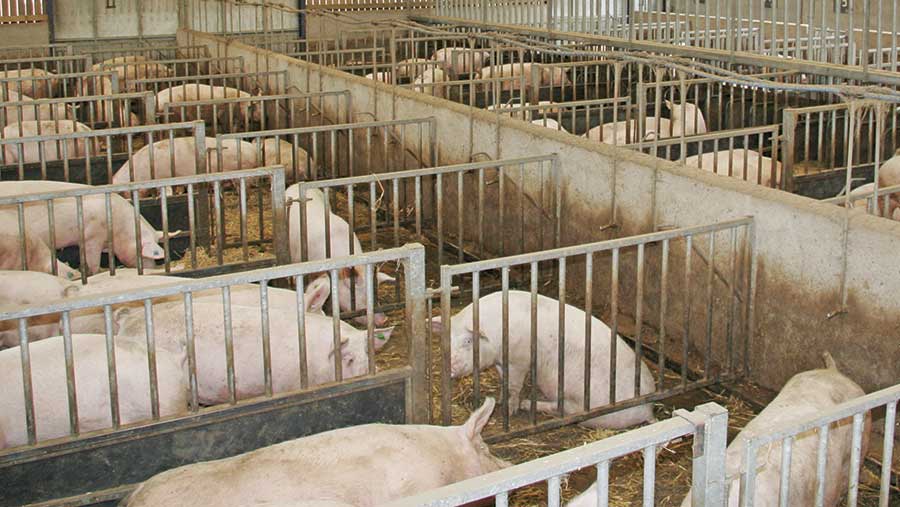Tips on improving water quality for pigs
 © Tim Scrivener
© Tim Scrivener There are big opportunities to achieve better pig health and growth through simple changes to water systems, with potential yet to be fully explored on many units.
Pigs need ready access to good quality, clean, palatable water and their water consumption is directly related to feed intake.
See also: Guide to biosecurity measures to keep pigs disease-free
Emma Slater in AHDB’s buildings and environment team provides some top tips to help producers assess water system design and deliver the right quality and quantity of water to every pig.
1. Assess system design and flow rates
When designing or assessing a water supply system, first break your unit down into ‘command areas’, which may comprise buildings, or differently stocked areas in a single building.
Groups of buildings of similar age and design might form a command area as water demands are likely to be uniform.
To minimise pressure differences between drinking points, the pipelines in command areas should be divided into header mains and laterals. Different diameter pipes may be needed for each.
Make sure you have the right number and type of drinkers for different groups of pigs (see diagram below).
Treat these as a minimum requirement. It is a good idea to provide more than one drinker per pen to act as a back-up. Carry out a daily check to ensure drinkers are clean and working.
To make sure flow rates are adequate through every drinker you must take into account pressure loss due to friction within the pipes.
It is possible to employ gravity to supply a building using a header tank not less than 2.5m over drinkers and select the correct drinker, pipe diameter and drinker regulator insert or setting.
Get full details on pipe diameters, layouts and fittings to manage water pressure in AHDB’s guide: Designing a water supply system for livestock (PDF).
Test flow rate for differences between drinkers nearest to and furthest from the supply. A significant difference between the first and last drinkers could mean there’s a problem.
Testing flow rate simply requires a large measuring jug, a watch and a minute of your time.
2. Create a storage buffer
The volume of on-site water storage should provide a buffer for use if there is any disruption in water supply. Consider the risks to pig welfare and the availability of alternative supplies.
3. Check water quality
The complete water line, including drinkers, pipework and header tanks, should be regularly cleaned and flushed through.
Alternatively, use special chemicals continuously, to reduce biofilms and coliform levels. Check flow rates post-flushing as dislodged biofilm can cause blockages.
Get water samples analysed to check quality and/or investigate issues such as poor water intake or blocked pipes. Speak to your vet/adviser to identify what to analyse and how to interpret the results.
AHDB’s standard operating procedures provide a step-by-step guide to water sampling for microbiology (which is a farm assurance requirement) along with minerals, flow rate and water temperature.
4. Choose the right acid
If producers are using organic acids in water, the amount needed to achieve the desired pH varies depending on the mineral content of the water and its buffering capacity.
Regionally, water varies; not just hard and soft but also mains and borehole. Chemical analysis of water should be the first step before choosing acids.
5. Make sure you meet regulations
Farm premises must comply with The Water Supply (Water Fittings) Regulations 1999, including that: water supplies to livestock accommodation and yard areas are to be protected by a suitable air gap to prevent the backflow of potentially contaminated or medicated water into the incoming public mains water supply.
For more information, including AHDB’s water system design guide, visit: The AHDB’s guide to water quality and quantity
